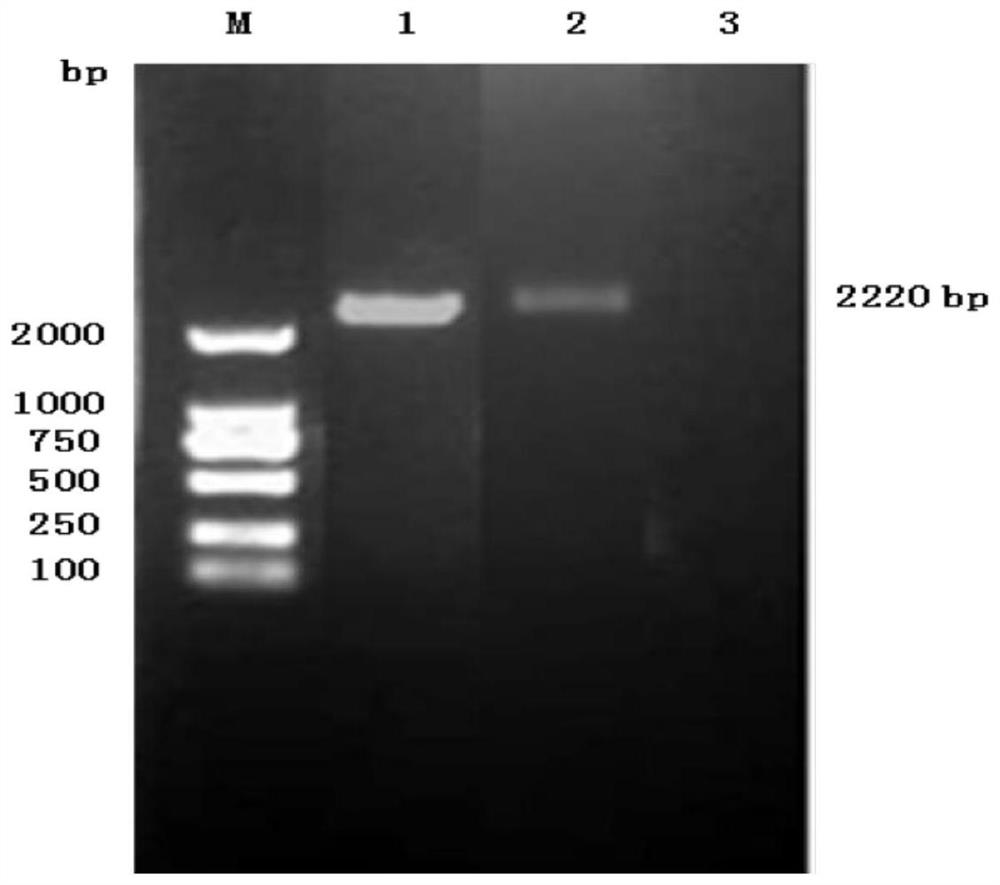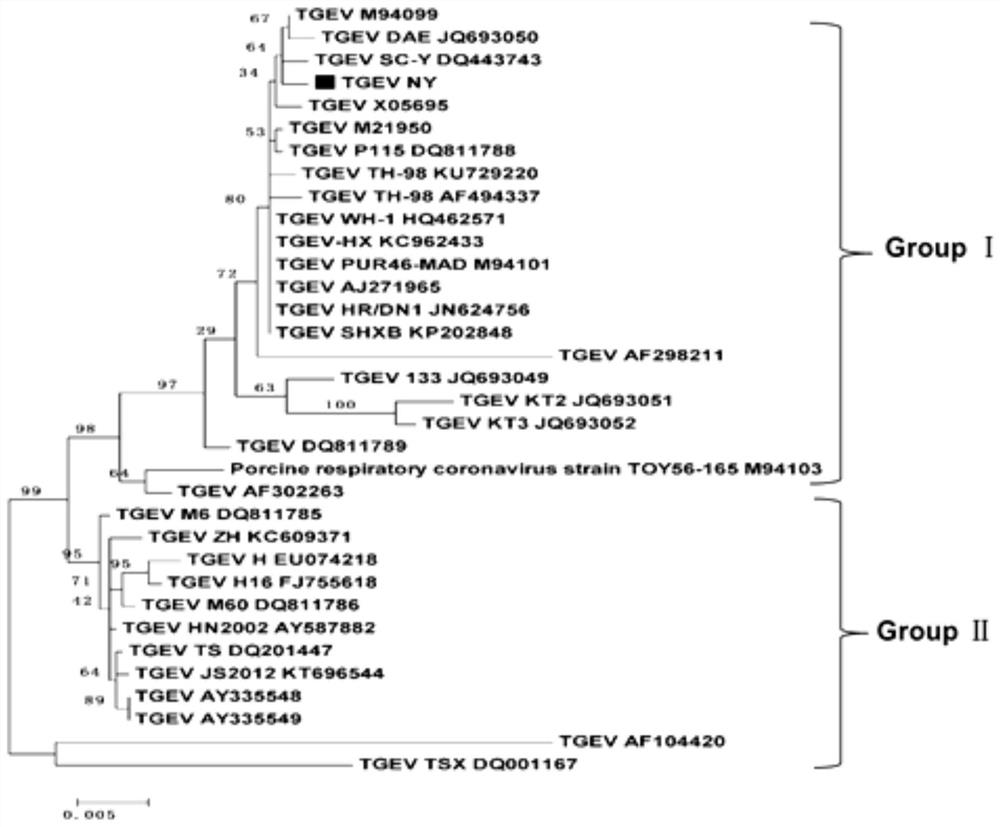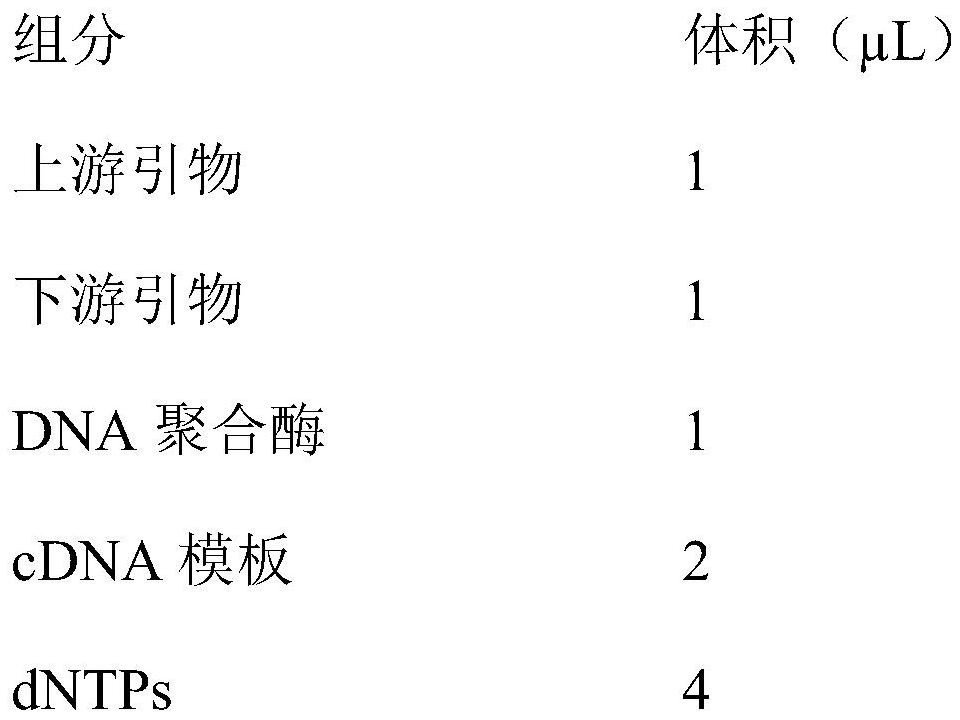Pig transmissible gastroenteritis virus and application thereof
A technology for infectious and gastroenteritis, applied in the direction of viruses, antiviral agents, virus antigen components, etc., can solve the problems of poor immune effect of vaccines, etc., to overcome the poor protection ability of vaccines, good stability, and convenient transportation and storage Effect
- Summary
- Abstract
- Description
- Claims
- Application Information
AI Technical Summary
Problems solved by technology
Method used
Image
Examples
Embodiment 1
[0077] The present embodiment isolates porcine transmissible gastroenteritis virus, and the separation steps are as follows:
[0078] (1) Collect 200 μL of sick pig feces and place them in a sterile EP tube, mix with 1 mL of PBS solution with a pH of 7.4, freeze at -20°C, thaw at 37°C, repeat 3 times, shake for 15 seconds and centrifuge at 3000 rpm After 2 minutes, the supernatant was collected and filtered with a 0.22 μm filter to obtain the crude virus extract, which was stored at -70°C for later use;
[0079] (2) The ST cells covered with a single layer were subcultured at a ratio of 1:4. After the cells were dispersed by pipetting, they were divided into cell culture flasks, and each bottle was supplemented with 15 mL of MEM containing 5% FBS;
[0080] (3) Inoculate the obtained virus crude extract in ST cells, the inoculated dose is 200 μL, at 37 ° C, 5% CO 2 The cell culture solution is collected when the cytopathic rate is not lower than 80%, and the porcine transmissi...
Embodiment 2
[0083] In this embodiment, the porcine transmissible gastroenteritis virus isolated in Example 1 is identified by RT-PCR, genetic evolution analysis and TCID 50 Determination.
[0084] RT-PCR identification
[0085] Take the diseased cell culture, use the RNA extraction kit to extract RNA according to the instructions, and reverse the RNA into cDNA according to the instructions of the reverse transcription kit, and use normal cells to perform the same operation as a negative control. The obtained cDNA is used as a template for amplification to amplify the S1 gene, and the primer sequences used for the amplification are shown in SEQ ID No.1-2.
[0086] SEQ ID No. 1: ACTAAGCTTTTAGCTTACATCACATGGCGTTACAG;
[0087] SEQ ID No. 2: ACTGGATCCATGAAAAAATTATTTGTGGTTTTGG.
[0088] The amplification system is as follows:
[0089]
[0090]
[0091] The amplification procedure is as follows:
[0092] Pre-denaturation: 95°C, 4min;
[0093] Cycle amplification: 98°C, 10s; 60°C, 30s;...
Embodiment 3
[0104] RT-PCT identification, genetic evolution analysis and TCID based on embodiment 2 50 As a result of the determination, it was confirmed that the isolated virus was a new epidemic strain of porcine transmissible gastroenteritis virus, named porcine transmissible gastroenteritis virus TGEV-HuN, and it was preserved in China Microorganisms on June 2, 2021 The General Microorganism Center of the Preservation Management Committee, the address is No. 3, No. 1, Beichen West Road, Chaoyang District, Beijing, postcode 100101, and the deposit number is CGMCC No.20279.
PUM
 Login to View More
Login to View More Abstract
Description
Claims
Application Information
 Login to View More
Login to View More - R&D Engineer
- R&D Manager
- IP Professional
- Industry Leading Data Capabilities
- Powerful AI technology
- Patent DNA Extraction
Browse by: Latest US Patents, China's latest patents, Technical Efficacy Thesaurus, Application Domain, Technology Topic, Popular Technical Reports.
© 2024 PatSnap. All rights reserved.Legal|Privacy policy|Modern Slavery Act Transparency Statement|Sitemap|About US| Contact US: help@patsnap.com










